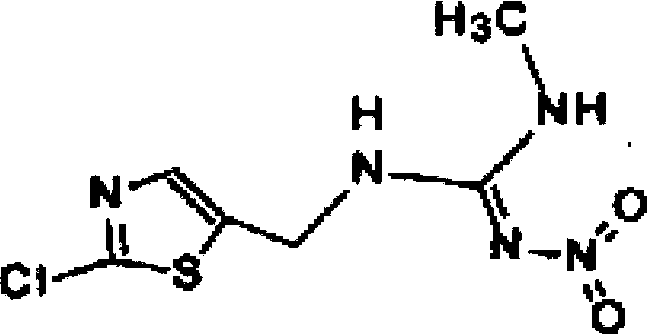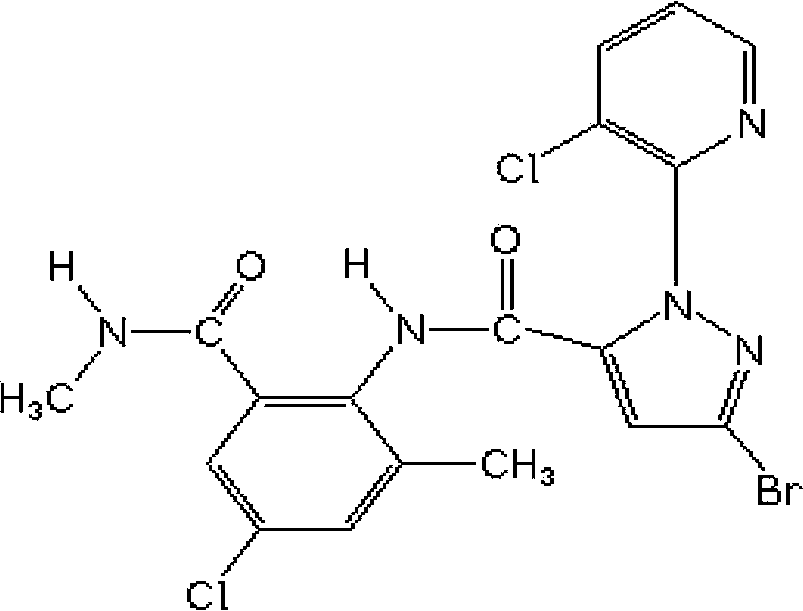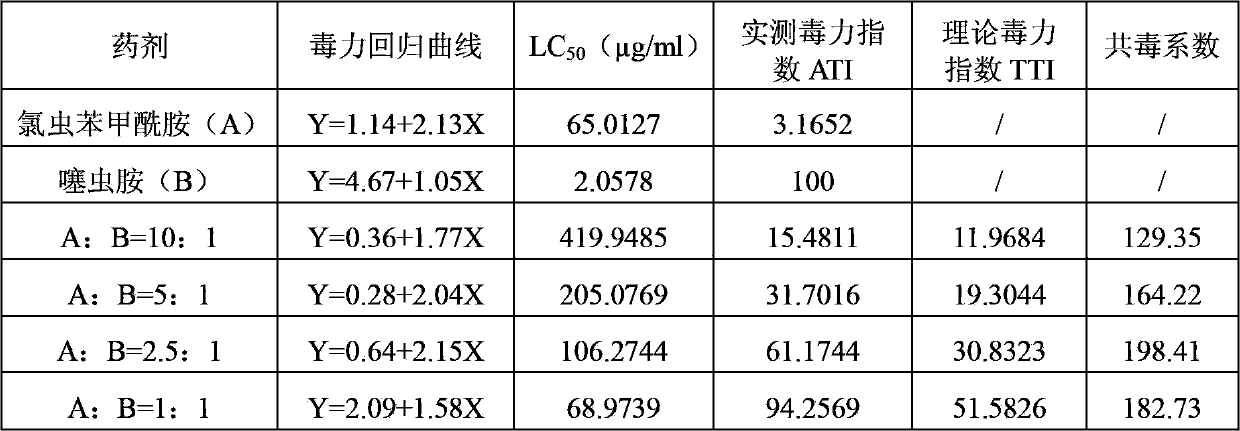Synergistic insect disinfestation composition containing clothianidin and chlorantraniliprole, and application thereof
A technology of chlorantraniliprole and an insecticidal composition, which is applied in the field of pesticides containing heterocyclic compounds, can solve the problems of narrow insecticidal spectrum, high cost of medication, and easy generation of drug resistance, etc., and achieves inhibition of resistance enhancement, production And the effect of reducing the cost of use and reducing the amount of pesticides used in the field
- Summary
- Abstract
- Description
- Claims
- Application Information
AI Technical Summary
Problems solved by technology
Method used
Image
Examples
Embodiment 1
[0023] Weigh 30 g of clothianidin and chlorantraniliprole, 4 g of calcium dodecylbenzenesulfonate, 3 g of phenethylphenol polyoxyethylene ether, and vegetable oil to 100 g. Put the above raw materials into a mixing tank according to the conventional method for preparing EC and mix them to prepare clothianidin·chlorantraniliprole EC with a main active ingredient of 30% by weight. The specific ratio of clothianidin and chlorantraniliprole is shown in Table 1.
[0024] The rice stem dipping method was used to determine the toxicity of clothianidin, chlorantraniliprole and their compound samples to rice planthoppers. Each treatment was repeated 3 times, and 30 heads were treated at each concentration. 50 Calculate the co-toxicity coefficient according to Sun Yunpei's method:
[0025] Table 1 Toxicity determination and co-toxicity coefficient of clothianidin, chlorantraniliprole and their compound samples to rice planthoppers
[0026]
[0027] The data in the table shows that ...
Embodiment 2
[0029] Weigh clothianidin and chlorantraniliprole and prepare clothianidin-chlorantraniliprole emulsifiable concentrate with a main active ingredient weight percentage of 30% by conventional preparation methods in different proportions. See Table 2 for specific proportions.
[0030] The toxicity of clothianidin, chlorantraniliprole and their compound samples to rice leaf roller was determined by feed poisoning method, each treatment was repeated 3 times, and LC 50 Calculate the co-toxicity coefficient according to Sun Yunpei's method:
[0031] Table 2 Toxicity determination and co-toxicity coefficient of clothianidin, chlorantraniliprole and their compound samples to rice leaf roller
[0032]
[0033] The data in the table shows that clothianidin and chlorantraniliprole have a synergistic effect on the rice leaf roller after being mixed, and the co-toxicity coefficients of the four ratios listed in the table are all far greater than 120. The mixture of chlorantraniliprole...
Embodiment 3
[0035] Weigh 4g of clothianidin, 20g of chlorantraniliprole, 4g of calcium dodecylbenzenesulfonate, 3g of phenethylphenol polyoxyethylene ether, and xylene to 100g, and mix the above raw materials according to the conventional method of preparing emulsifiable concentrate Mix in the kettle to form clothianidin · chlorantraniliprole emulsifiable concentrate whose main active ingredient is 24% by weight.
[0036] The sample prepared in Example 3 was used to carry out the field test of rice planthopper prevention and control in the field. The contrast agent was 15% clothianidin EC and 22% chlorantraniliprole SC. The specific dosage is shown in Table 3, and the water consumption per mu is 30kg. 3 days after the medicine, 7 days, 14 days, 28 days results, the test results are shown in Table 3:
[0037] Table 3 example 3 sample is to the field test result of paddy rice planthopper
[0038]
[0039] It can be seen from Table 3 that Example 3 has an excellent quick-acting effect on...
PUM
 Login to View More
Login to View More Abstract
Description
Claims
Application Information
 Login to View More
Login to View More - R&D
- Intellectual Property
- Life Sciences
- Materials
- Tech Scout
- Unparalleled Data Quality
- Higher Quality Content
- 60% Fewer Hallucinations
Browse by: Latest US Patents, China's latest patents, Technical Efficacy Thesaurus, Application Domain, Technology Topic, Popular Technical Reports.
© 2025 PatSnap. All rights reserved.Legal|Privacy policy|Modern Slavery Act Transparency Statement|Sitemap|About US| Contact US: help@patsnap.com



